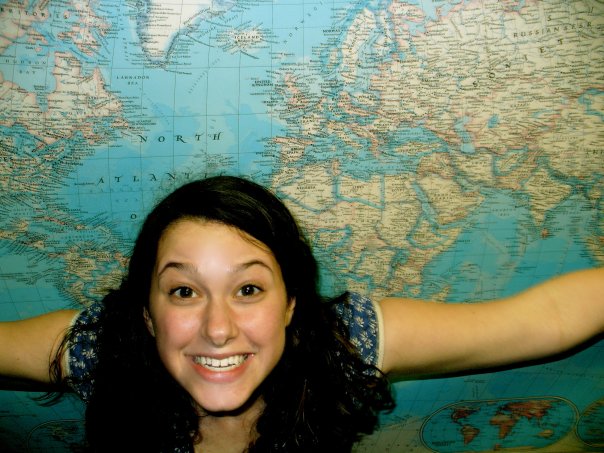
Our first day in Poland we went to Auschwitz, which is about an hour away from Krakow. Wow. Wow. I am so surrounded every day by recreations and exhibits and virtual reality that it was (and kind of still is) almost impossible to wrap my mind around the fact that we were seeing, touching, experiencing the real thing. It seems ludicrous that real people were ever there. It seems ridiculous to suggest that something like the Holocaust could happen just barely over half a century ago.
Here's the infamous "Arbeit Macht Frei" gate ("Work brings freedom"):
We walked under this gate as we began our tour of Auschwitz I, which was the original camp and administrative offices. It was at first a prison camp for "dangerous" Polish citizens like intellectuals and members of the resistance, and later for Soviet prisoners of war and German criminals. In between two barracks is the remains of an execution wall that was used for individual executions for these prisoners:
Auschwitz I is actually a lot smaller than I was expecting: it's made up of fewer than twenty barracks. Most of the barracks in this camp have been converted into exhibits.

Inside, case after case is filled with remains of the lives of prisoners of the camps: mounds of suitcases that Jews were told to take with them to start their new lives; piles of pots and pans, baby clothes, family heirlooms, eyeglasses, hair, shoes.
It was hard to believe. And it's even harder to try to explain later, and especially difficult to try to convey on a blog. I can't explain what it was like to walk through the barrack hallways or walk down the stairs into the basement where the first gassings occurred or look at drawings that prisoners had scratched into the walls of the starvation cell.
After touring through the exhibits, we headed to Auschwitz II, also known as Birkenau. This camp was constructed a few years after the first one to make more room for the people that began to pour in from the Jewish ghettos. Birkenau was the main extermination camp and the site of over a million deaths during the war. It got its name from the birch trees that surround the camp:
There were a few barracks remaining, but most of them were wooden and had been torn down. The only thing that remained on the miles and miles of land were red brick chimneys rising up absurdly from the hints of each foundation. We walked alongside the railroad tracks where convoys of people arrived every day:
We stood on the platform where the selection process occurred-- prisoners who were deemed fit to work to the right, and everyone else (almost three-fourths of every convoy) to the left: mothers and their children, the elderly, the sick, and anyone else who the SS doctors thought was unfit. Then we walked down the "road of death" toward the gas chambers and crematoriums.
The gas chambers at Birkenau were disguised to be shower facilities, so the prisoners were told that they were undergoing a "disinfection" process. The ones in this camp had been much bigger than those at Auschwitz I-- more than 20,000 people could be gassed and cremated every day. They aren't standing anymore because, in an attempt to hide their crimes, the Nazis blew them up when the Soviet Army was advancing. Here's all that's left:
After the gas chamber, we walked all the way across the huge grounds and went through one of the still-standing buildings, the children's barracks.
Then... we got back on our minibus and went back to real life. And that was probably the weirdest part of all. Nobody really knew what to do or say afterwards. There was no "but-at-least-we-learned-from-it" pep talk from our tour guide; no memorial gardens or pictures of survivors. Instead, we were left remembering the words on a series of plaques in every language that was spoken at the camps. Each one read:
"For ever let this place be a cry of despair and a warning to humanity, where the Nazis murdered about one and a half million men, women, and children, mainly Jews from various countries of Europe."
Which it was. The end. I guess I don't know what else to say about it or how to end this post poetically.








No comments:
Post a Comment